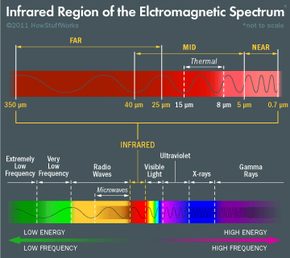Infrared Explained through Thermal Imaging
Have you ever seen a thermal image with various colors denoting different temperatures? If you have, you are peering into the spectrum of infrared. An infrared camera can sense and photograph the temperatures of its surroundings. How can it do this? The objects, people, animals, etc. are giving off thermal radiation. If that sounds scary, rest assured it’s innocuous, and here’s why. Any object that is above absolute zero (that’s -459.67 degrees F!) gives off infrared. And, since absolute zero is impossible to reach, all objects give off thermal radiation. It is only the intensity (i.e. temperature) that varies. Thermal radiation is non-ionizing and cannot give you cancer. That’s a good thing since we’re barraged with thermal radiation from the ground, trees, rocks, houses, and everything else that surrounds us!
Campfire-like Warmth
The physiological effect of infrared (the warmth that you feel) is predominately correlated to how hot the other object is (temperature and total heat output), and how close you are to it. We feel the warmth of the sun via infrared even though we’re 93 million miles away because the sun is massive and is about 10,000 degrees. If you’ve ever sat next to a campfire and felt the intense warmth, this is from its thermal radiation i.e. infrared. Thermal energy transfers from hot to cold, and since you’re colder than the campfire, you’re receiving the infrared. To demonstrate the opposite effect, if you hold your hand a couple of inches from a window when it’s cold out, you can feel the cold from the window. This is actually thermal radiation from you that is going to the window.

